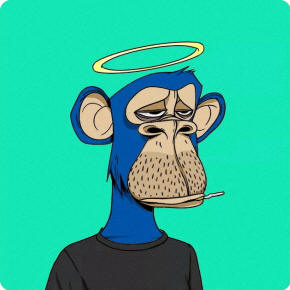Cryptoverse: The bonfire of the NFTs
 Send a link to a friend
Send a link to a friend
 [July 05, 2022] By
Elizabeth Howcroft [July 05, 2022] By
Elizabeth Howcroft
(Reuters) - The NFT dream isn't dead, but
it's taken a big non-fungible beating.
The market shone gloriously last year as crypto-rich speculators spent
billions of dollars on the risky assets, pumping up prices and profits.
Now, six months into 2022, it's looking ugly.
Monthly sales volume on the largest NFT marketplace, OpenSea, plunged to
$700 million in June, down from $2.6 billion in May and a far cry from
January's peak of nearly $5 billion.
By late June the average NFT sale sunk to $412, from $1,754 at the end
of April, according to NonFungible.com, which tracks sales on the
Ethereum and Ronin blockchains.
"The crypto bear market has definitely had an impact on the NFT space,"
said Gauthier Zuppinger, co-founder of NonFungible.com.
"We have seen so much speculation, so much hype around this kind of
asset," he added. "Now we see some sort of decrease just because people
realise they will not become a millionaire in two days."
The NFT market has collapsed along with cryptocurrencies, which are
typically used to pay for the assets, at a time when central banks have
jacked up rates to combat inflation, and risk appetite has withered.

Bitcoin lost around 57% in the six months of the year, while ether has
dropped 71%.
Graphic: Monthly NFT sales volume on OpenSea marketplace,
https://fingfx.thomsonreuters.com/
gfx/mkt/lgpdwbzbjvo/Monthly%20NFT
%20sales
%20volume%20on%20OpenSea%20marketplace.png
DIP OR DEATH SPIRAL?
For critics, the crash confirms the folly of buying such assets,
tradable blockchain-based records linked to digital files such as images
or videos, often artwork.
The Malaysian businessman who bought an NFT of Jack Dorsey's first tweet
for $2.5 million last year struggled to get bids of more than a few
thousand dollars when he tried to re-sell it in April.
But Benoit Bosc, global head of product at crypto trading firm GSR, sees
the downturn as the perfect time to build a corporate NFT collection -
the crypto equivalent of the fine art traditional banks display to
impress clients.
Last month, GSR spent $500,000 on NFTs from what Bosc calls "blue-chip"
collections - those with large online fan bases.
His purchases include an NFT from the Bored Ape Yacht Club, a set of
10,000 cartoon monkeys made by U.S.-based company Yuga Labs and promoted
by the likes of Paris Hilton and Jimmy Fallon.
Such is the hype surrounding Bored Apes that Yuga Labs raised $285
million in April by selling tokens it says can be exchanged for land in
a Bored Apes-themed virtual world it has not yet launched.
Yet the average sale price for a Bored Ape tumbled to around $110,000 in
June, having halved since its January peak of $238,000, according to
market tracker CryptoSlam.
In his New York office, Bosc put up three screens on which to display
his NFTs, which include various pixelated characters and a Bored Ape
bought for $125,000.
[to top of second column] |

'Bored Ape #8971', part of the Bored Ape Yacht Club collection of
10,000 computer-generated cartoon apes which are traded in the form
of NFT is seen in this undated handout. Benoit Bosc/Handout via
REUTERS

"For us, it's also a brand exercise," Bosc said. Owning a valuable NFT and using
it as a profile picture on social media is a way to establish "respectability,
authority and influence" in the crypto sphere, he said.
Graphic: Average NFT sale price per week,
https://fingfx.thomsonreuters.com/
gfx/mkt/
klvykryrbvg/Average%20NFT%20sale
%20price%20per%20week.png
GAME OVER? GAME ON?
Nonetheless, the future of NFTs is distinctly uncertain, as the era of low
interest rates which encouraged investors to take risky bets comes to an end.
Some market watchers say the influence of NFTs on the art market will shrink.
Meanwhile, even though the much-hyped vision for a blockchain-based metaverse
hasn't materialised yet, enthusiasts expect NFTs to shake up the gaming
industry, for example by allowing players to own in-game assets such as avatar
skins.
"Everyone believes games are going to be the next big thing in blockchain," said
Modesta Masoit, chief financial officer at blockchain tracker DappRadar.
This risky combination of gaming and financial speculation may face
difficulties, though. Most gamers prefer games which do not include NFTs or
"play-to-earn" components, according to John Egan, CEO of technology research
firm L'Atelier.
Although the groundbreaking new crypto regulations agreed by the European Union
last week mostly excluded NFTs, Spain is separately seeking to clamp down on the
way video games sell virtual assets for real money.
Meanwhile, the biggest NFT-based game, Axie Infinity, has seen its in-game token
collapse to less than half a cent, down from a peak of 36 cents last year.
For L'Atelier's Egan, the NFT market is unlikely to recover in its current form.
"Ultimately it's a situation where extraordinary amounts of money are being paid
for extraordinarily limited assets that don't really produce any cash flow," he
said.
But the underlying concept of creating unique digital assets is still
"fundamentally important" and will have "massive applications" for the financial
sector in future, he said.

Graphic: Quarterly NFT sales volume by type,
https://fingfx.thomsonreuters.com/
gfx/mkt/
dwpkrmbmqvm/Quarterly%20NFT%20sales%20volume%20by%20type%20across%2015%20top%20blockchains.png
(Reporting by Elizabeth Howcroft; Editing by Pravin Char)
[© 2022 Thomson Reuters. All rights
reserved.]This material may not be published,
broadcast, rewritten or redistributed.
Thompson Reuters is solely responsible for this content. |